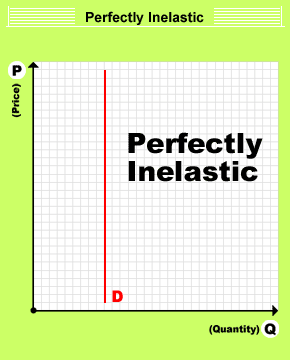Case Study 3.9e "The Inelastic Demand For Illegal Drugs"
Directions: Complete the following case study and record your answers on a separate sheet of paper.
Topic: Illegal drugs, which have an inelastic demand on the black market due to drug addiction.
Objective: To analyze how the illegal drug trade is different from other businesses. This is largely due to the inelastic demand generated by the addiction of drug users.
| Key Terms: | inelastic demand | elastic demand |
| black market | demand | |
| inelastic | elastic | |
| Careers: | economist | social worker |
| Web Site Links: | http://pbs.org/wgbh/pages/frontline/shows/drugs | |
One of the most profitable activities pursued by organized crime today is the production and distribution of illegal drugs. No one knows the exact amount of the profits made by drug cartels. However, experts assert that illegal drug sales are worth well over $60 billion a year in the United States alone. Between $10 billion and $30 billion are transferred out of the U.S. economy and directed to South American, African and Asian nations. The power and reach of the drug cartels into the American marketplace has increased over time. While the U.S. government and its allies have spent billions of dollars attempting to stop the drug trade, the inelastic demand for drugs makes winning the War on Drugs very difficult.
CS Question #1: How much money is transferred out of the U.S. economy?
Two primary factors add to the uniqueness of the drug trade in the modern market. One factor is the cost of drug production. Cocaine, being an agricultural product, is very inexpensive to grow and process into a usable form. Large plantations grow coca and heroin and then process the drugs at a very low cost. A profit margin describes the difference between the cost of producing a good or service and the retail value of that same good or service. In Colombia a kilo of cocaine can cost as little as $500, but in the U.S. market that kilo can get as much as $60,000. With such a big profit margin, the drug trade's existence is more or less assured. When agents seize a large amount of drugs from dealers or producers, producers can merely produce more drugs to make up the loss. A former DEA agent commented that a drug cartel "could afford to lose 90 percent of its profit and still be profitable. Now think of the analogy. GM builds a million Chevrolets a year. Doesn't sell 90,000 of them and still comes out profitable."
CS Question #2: What are the profit margins involved in the drug trade?
The other unique factor of the drug trade is the inelastic demand for drugs. Demand describes the relationship between the quantity of goods available and how many consumers wish to buy. If there are few goods yet many consumers, the price of the goods rises, or inflates. As prices rise, often more goods become available, and consumers become less eager to buy. This formula, however, is rarely proportional. The term elasticity describes the measure of responsiveness of supply and demand changes. Industries producing goods for which there are no reasonable substitutes create inelastic demand. Consumers cannot switch to a similar but different product, nor can they shop around for less expensive versions. Industries with inelastic demands can increase revenues by increasing prices. Consumers, without market options, will be forced to pay the higher prices.
CS Question #3: What is the elasticity of demand?
International drug cartels have been benefiting from a form of inelastic demand. While there are many producers of cocaine, for example, each produces the same cocaine and sells it at the same prices. Drug users are less interested in the producer of the cocaine than they are in the cocaine itself. Drug users become addicted to cocaine, forcing them to consume more and more of it. More addicts create an increase in the demand for drugs. This makes the business of illegal drugs different from most others: Once a consumer becomes addicted, he or she will remain a consumer, continuing to consume an increasingly greater amount of the drug until stopped by a crisis.
Illegal drugs are not responsive to an increase in price. Increasing prices will increase total revenue. Decreasing prices will decrease total revenue. In other words, illegal drugs are inelastic. Further, they are perfectly inelastic. The quantity demanded is completely insensitive to any change in price. The demand curve for a perfectly inelastic good, like illegal drugs, is a vertical line at each quantity. Below is a perfectly inelastic demand curve.

CS Question #4: How do the drug cartels benefit from inelastic demand?
Further Thought: